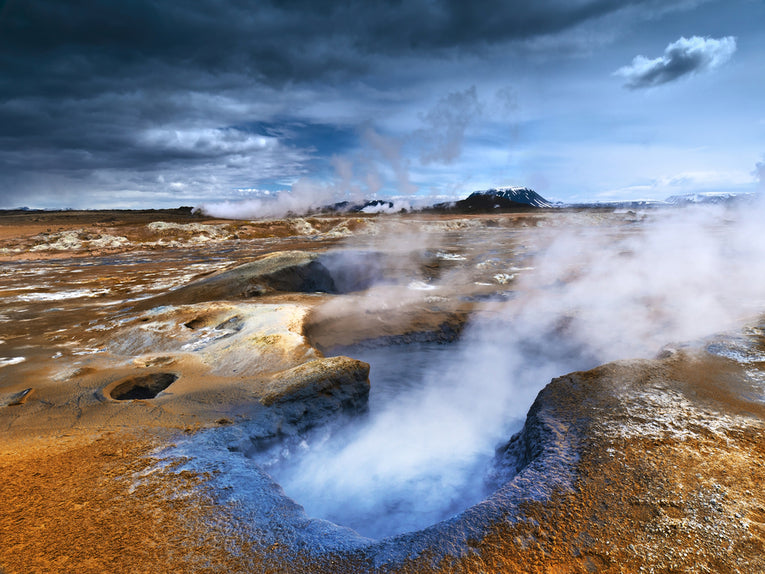Geothermal energy seems, to the casual observer, to be neglected by recent development. The 16% of renewable energy that we struggle to produce for our total needs does include mainly biomass such as Brazil's vast ethanol facilities that supply mainly cars and trucks. Hydro-electric forms of energy predominate elsewhere.
Wind power is the 'glamour energy' of the moment, with up to 30% growth annually, mainly in China and the US. California has the largest wind farm with 1020MW and is also the geothermal leader because they have those famous geysers supplying 750MW of electricity.
There has been an increase of 20% in geothermal online capacity since 2005, according to the International Geothermal Association. Where previously, no possibilities existed, some areas in the Philippines, for example, have increased their geothermal capacity to 1904MW and 18% of Philippines power output. Hot dry rock (HDR) energy should soon be a new renewable resource, although it was always touted as the simplest solution to renewable energy.
France and Japan and a recent development in Australia are taking the concept into useful project form, but it's confusing as to why this area has been neglected when Iceland has been using admittedly shallow hot rock technology for years.
In Africa and poorer Asian countries, renewables are especially useful because of the distance between communities that need to be supplied. Win-up radios and lighting are apparently becoming more popular, too. Development now depends especially on more modern technologies such as ultra-efficient biogas stoves. Solar PV systems and micro-hydro plants supply millions of people who live in small numbers over enormous land areas.
Legislation and high fossil fuel prices both drive the renewable revolution. The IEA think that solar power will soon be the dominant energy, given the recent surge in better and better cells and batteries for storage. That is debatable, as less sunny regions will want to have self-sufficient energy sources and besides, wind has a large lead at the moment!
On the other hand, as we have written frequently, solar energy is perhaps better captured using a technique involving an artificial leaf or photosynthetic stage. The countries in the lead for renewable energy use are often mountainous, for hydro-electric purposes, including Sweden, New Zealand, Austria, Brazil, Norway and Iceland. 30 countries exceed the basic level of renewable energy contributions (around 20%.)
As far as other alternative energy is concerned, generating power from wave action or tidal flow is tempting the UK, although they lead only in offshore wind power generation so far, just ahead in production from Denmark. The North Sea must be as stormy as they say!
Photovoltaic cell power is a European research speciality, with 20% growth per annum, even greater since 2007. Germany is the highest in such solar capacity, but the biggest power stations are in the US, India, China and Ukraine. Of course California again will have the biggest, when it's built its 550MW plant known as, "The Desert Sunlight Solar Farm," in Riverside County.
However the latest technology uses Building-Integrated Photo-Voltaics (BIPVs) useful to generate power within its place of need. The actual building is coated in a great space-saving advance. All of these forms of energy are liable to displace geothermal energy facilities, but it remains as the old faithful, available everywhere for those willing to invest.










